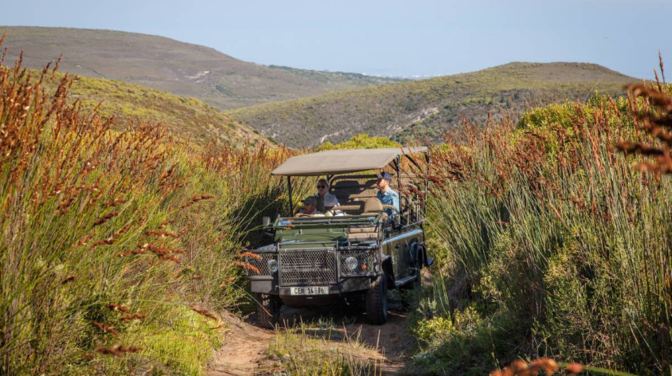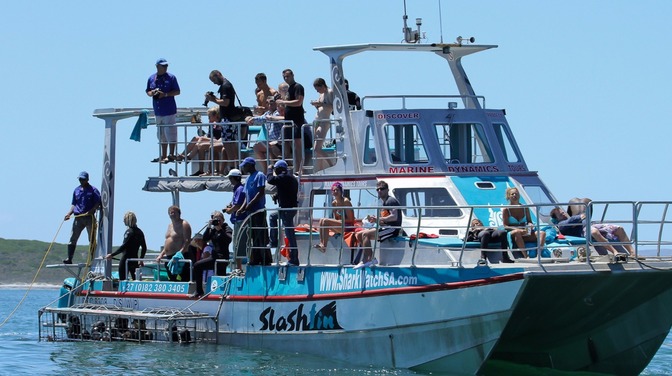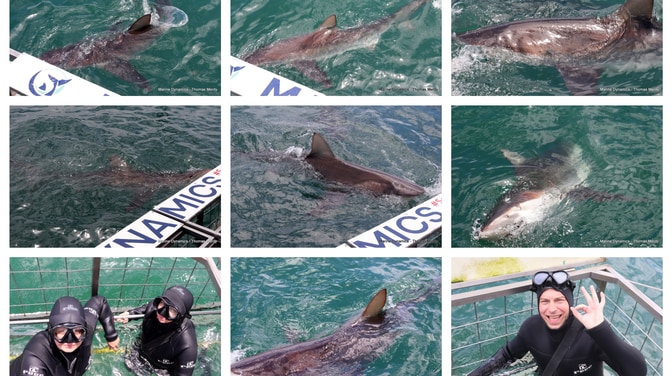Select a category
Legend, Fable or Fact?
The estimated 150 shipwrecks buried in the seabed between Gansbaai and Cape Infanta have, over the years, yielded many treasure troves - literally and figuratively. Apart from the prized relics, artefacts and coin collections found and looted from the wrecks, the misfortune of thousands of sea farers who met their fate along this dangerous shoreline also yielded a treasure chest of fascinating fables and folklore - too freckled with facts to ignore!
Pirates of the Cape Storms
One of the popular stories has it that local fishermen intentionally lured passing ships to the rocky coastline during stormy nights in order to loot the wrecks. The distressed captain, blissfully under the impression that the village folks were steering them to safety, would gratefully follow the light of a fire or a lantern beckoning them in the pitch darkness from a hill or dune, only to hit the dangerous reefs and rocks lurking just below the water surface. It is believed that this cruel practice carried on until the Danger Point Lighthouse finally put an end to it in 1895. However, there is no authentic proof or evidence of this practice, and it was never mentioned in any documentation regarding the Birkenhead disaster. The debut novel Die Lanternswaaier of local writer and storyteller SD Fourie is nevertheless based on this opportunistic practice that allegedly used to be a common and popular form of pirating by coastal dwellers around the world in earlier years.
Black Sophie still keeps watch over her Kleinbaai Inn
Black Sophie, a famous big black rock in the sea about 200 meters from Kleinbaai, has allegedly been named after the first madam of a brothel in the Overberg. According to an interesting combination of folklore and recorded history, Sophia Werner and her girls also prevented the first full-blown strike amongst guano harvesters on Dyer Island by taking pity on the men's emotional distress!
The story begins in 1806 when Sampson Dyers (a black man of Polynesian descent) was the first known human to live on Dyer Island. In those years, the island was still called Isla de Fera (Island of Creatures or Wild Animals) as 15th century Portuguese seafarers have dubbed it - apparently after the numerous Cape Fur Seals and African Penguins that populated it. Dyers made a living by clubbing seals and exporting their pelts to America. The island was only later named after him. It is amazing that the seal and penguin population survived until today despite Dyer's onslaught and the harvesting of penguin eggs by sailors.
A few decades after Dyers left, a group of about 40 guano harvesters working on Dyer Island became lonely and threatened to strike if something was not done to cater for their emotional needs.
At that stage, Black Sophie, a big lady "of dark complexion" managed a Cape Town inn that catered for sailors and guano harvesters. Allegedly, both her parties and her girls were world famous. When Sophie got word of the situation on Dyer Island, she loaded her girls in wagons and rushed to the rescue of the forlorn men. After a long and difficult journey over high mountain passes, they set up a camp on the beach of present day Kleinbaai. Black Sophie signaled the guano harvesters on Dyer Island and soon the Kleinbaai beach became a famous party venue. And the men? Not a word about a strike was mentioned again. Sophie and her girls became so popular that she has been immortalised as a big black rock in the sea near the Kleinbaai beach from where she allegedly still keeps an eye on her men . . . .
Birkenhead was named after the Roman god Vulcan
The HMS Birkenhead was apparently first named the HMS Vulcan (after the god Vulcan of Roman Mythology). Initially designed and built as a frigate at John Laird's shipyard at Birkenhead in 1845, she was reportedly converted to a troopship and renamed HM Birkenhead after the town where she was built before being commissioned in 1848. The original HMS Vulcan was a British iron, paddle-wheel frigate of 1400 tons and one of the first iron-hulled ships built for the Royal Navy. She had two 564 horsepower (421 kW) steam engines that drove a pair of 6-metre (20 ft) paddle wheels, and two masts rigged as a brig.
Birkenhead treasure?
The wreck of the Birkenhead is reportedly buried at a depth of 30 metres at sea near the notorious Birkenhead Rock that sank her.Persistent rumours have it that she carried 250,000 pounds in "specie" (gold and silver coins), which was the military pay packet for the troops fighting up in East London. Despite experts' opinion that there was not enough room on the ship to carry such a heavy treasure, and countless fruitless efforts by various opportunistic divers to salvage the treasure, the mystery remains.
Some claim that archives research revealed evidence that it was stated during the Court-martial of Richard Bevan Richards (the Master's assistant), that there were indeed 120 boxes of specie on board. However, even a thorough archaeological and salvage excavation by the combined efforts of Aqua Exploration, Depth Recovery Unit groups and Pentow Marine Salvage Company (today renamed Smit Marine), from 1986 to 1988, turned up nothing but a handful of artefacts and gold coins which were "private purses" belonging to officers. Is it possible that the legendary treasure is still waiting to be found, or has it been found long ago . . . by who?
Birkenhead protocol?
Another popular belief for which the Birkenhead crew is commemorated each year, is that they initiated the admirable "women and children first protocol" that has since become standard naval procedure. Apparently, this is not completely true and quite recently, the captain of the wrecked Italian Costa Concordia cruise ship also sadly proved to the world that the noble protocol is not always honoured by all commanding officers - never mind all crew members! According to authentic documentation, the "woman and children first" protocol was already applied at least 15 years prior to the Birkenhead disaster in another shipwreck. The alleged bravery and chivalry of the Birkenhead crew to willingly sacrifice their lives for women and children was also dealt a sore blow in a letter written by one of the survivors, the late captain GA Lucas. In the letter to his father, written shortly after the tragedy, Lucas stated that the commanding officers had trouble refraining the men from jumping in the lifeboats first and "some two or three did, in spite of me (my attempts to stop them)".













